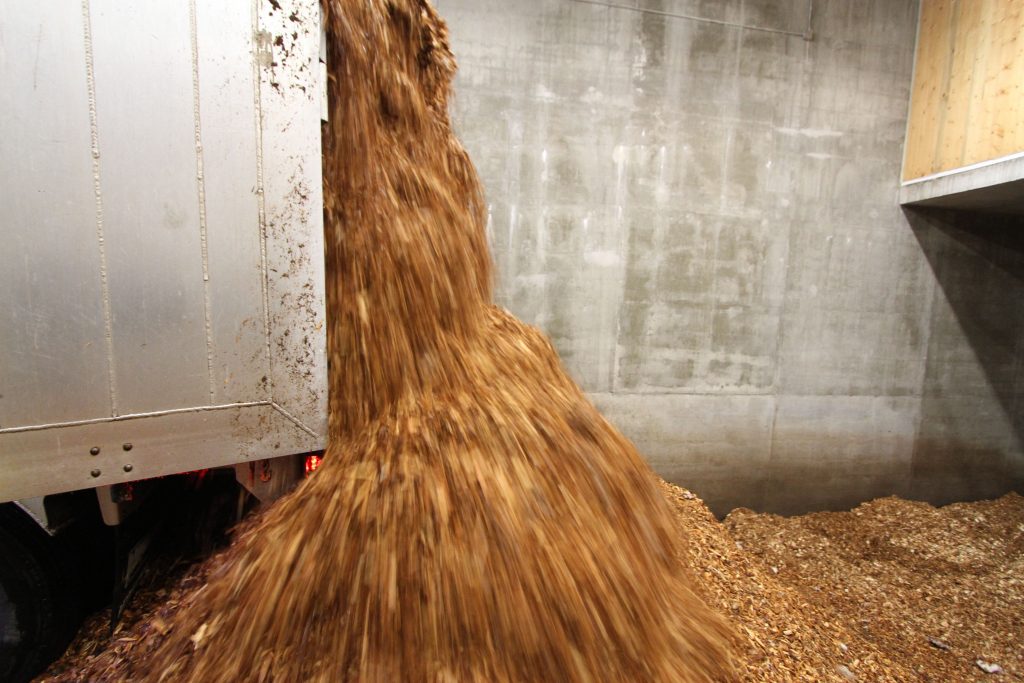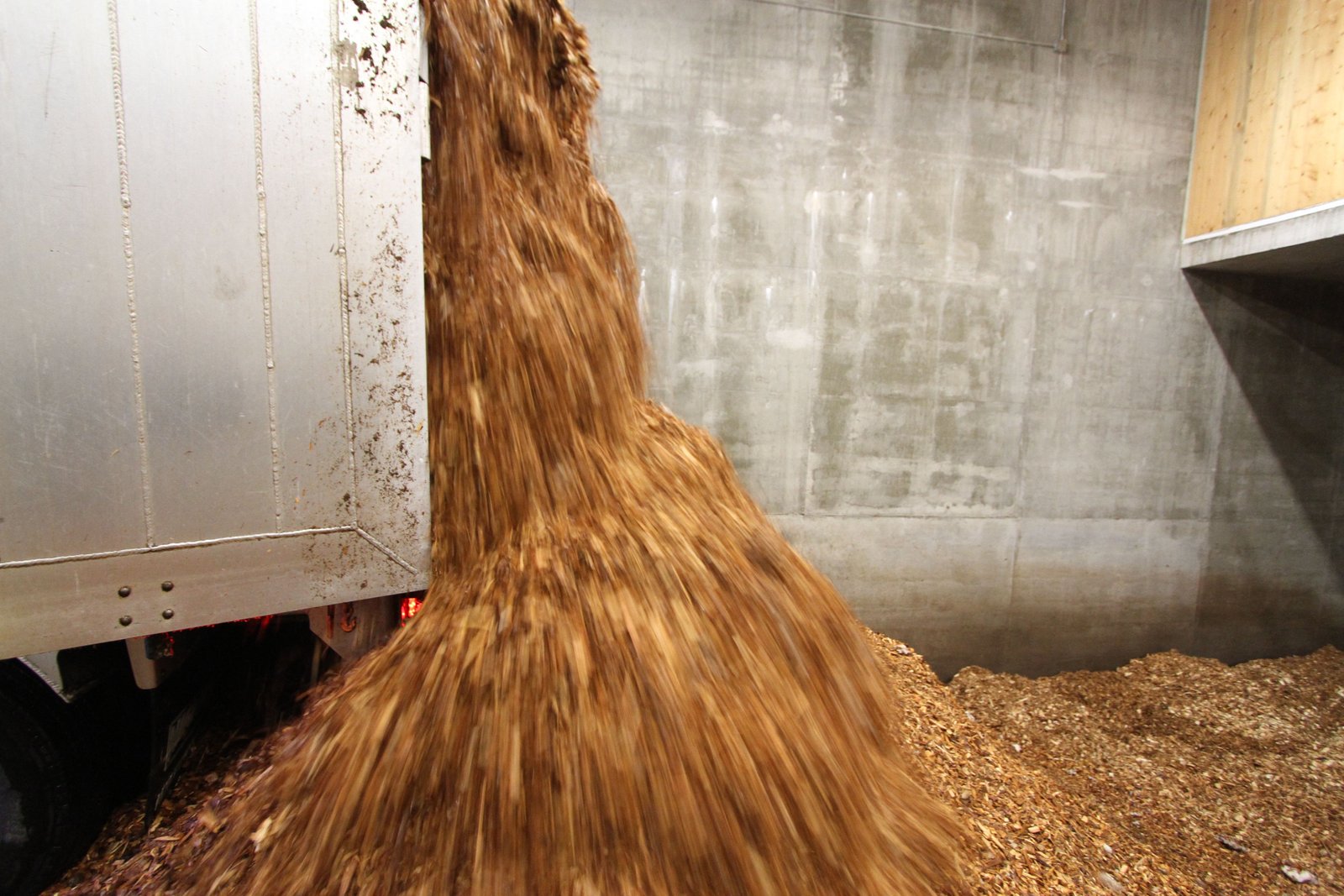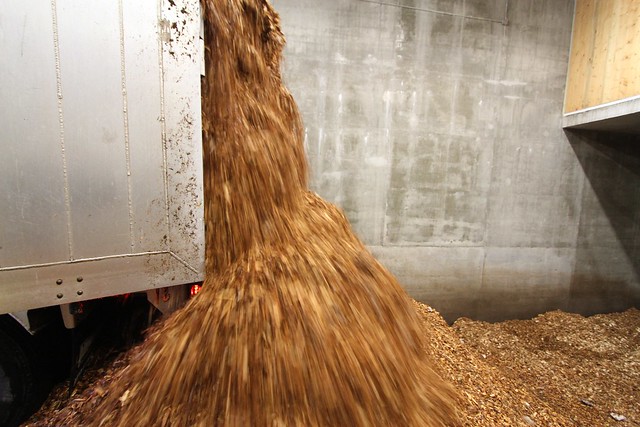By David Dodge and Duncan Kinney
When you look through the University of British Columbia archives and see photos from the original district heating system being built you can spot Model T Fords in the photos. Now the creaking, turn of the century steam pipes at the University of British Columbia are transforming into a modern, modular low-carbon Lego style hot water system.
The new hot water style heating system at UBC can now integrate renewable energy systems like biomass, geoexchange, solar thermal and waste heat into this natural gas system all because the barrier for entry is lower. The bouncer at the old steam heating system was pretty strict – you had to be 190 C to get in. Now you only have to get the temperature up to 80 C.
While district heating makes a lot of sense on a university campus it’s still not a terribly popular idea in North America. Canada is still a tiny player in district energy and most of the district heating systems in Canada are either university campuses or hospitals.
“District heating is basically a very old fashioned way of space heating. Instead of every building having its own little boiler and forced air systems, this is a hot water based system and you have pipes that take the hot water out from a heating plant and run it through the buildings and then bring it back to be reheated,” says Nancy Knight the associate vice-president of planning at UBC.
Having a hot-water system versus a steam system is the game changer when it comes to adding renewable, lower-carbon heat sources to the system. The turn-of-the-century steam system that’s being replaced operates at high pressure and at around 190°C, the hot water system that’s replacing it works at 80°C.

Receiving one of two daily biomass shipments at the Bioenergy Research and Demonstration Facility at UBC. Photo David Dodge
Biomass: modern hewers of wood
With 14 kilometres of pipe it’s not a system that’s going to be replaced overnight, but it is in progress and they’ve already added some low-carbon sources of heat. In a back-to-the-future sort of way, the Bioenergy Research and Demonstration Facility burns locally sourced wood waste and tree trimmings and provides 25 per cent of UBC’s baseload heating needs. This biomass plant opened in 2012 and it reduces UBC’s natural gas consumption by 12 per cent and campus greenhouse gas emissions by nine per cent (5,000 tonnes).
To put the biomass plant in perspective Knight says “It fits on two city lots, it takes two trucks a day of wood waste and it heats about 2,000 homes.” Of course this plant heats university space, not homes, but Knight’s point is that biomass can “slip into a nieghbourhood very easily. It’s not an intrusive technology at all.”
A trailer truck pulls up to the four-storey, 1,900 square meter building and the wood is tipped into a large holding area. Instead of burning the wood in a typical boiler the wood is turned into syngas. That syngas is separated into two streams – one burnt for heat and the other is cleaned up and burned for electricity.

Neil Saldanha Manager of R&D Nexterra touring the Bioenergy Research and Demonstration Centre at the University of British Columbia. Photo David Dodge
“Now, this is a challenge because the syngas is not as clean as it needs to be,” says Knight. “So cleaning up the gas before it goes into the engine is an area of significant research activity that our clean energy researchers are involved in. So, if we can crack that nut and make the biomass able to generate not just thermal energy but also electricity easily, think of what the opportunities for that would be.”
Like the Center for Interactive Research on Sustainability (CIRS), which we profiled, UBC is using its campus as a laboratory for new, low-carbon technologies. The CIRS building is also the clearest example of what this low-carbon Lego system would look like in the future.
The building is mostly heated by waste heat from a neighbor that has a large, inefficient lab exhaust air-handling system. It also has geoexchange and solar thermal technologies integrated into the building as well. These renewable heat sources can be integrated into the campus system because of the flexibility of the new hot water district heating system.
As the hot water district heating system is built out and UBC upgrades its buildings as part of its greenhouse gas reduction plan the possibilities for expansion expand. There are several science buildings on campus that vent heated air into the environment as a matter of course. With a bit of planning and some strategically placed heat pumps the UBC campus could be get a significant amount of its heat from the air exhausts it uses for science purposes.
Saving money, reducing emissions

Dr. Nancy Knight VP Planning at the UBC Bioenergy Research and Demonstration Centre. The biomass plant has resulted in a 12 per cent and emissions by nine per cent. Photo David Dodge
According to Knight they’ll save about 20 per cent of their energy costs just with the steam to hot-water conversion alone. A 20 per cent reduction in energy costs on a campus the size of UBC is nothing to sneeze at. It means more money can be put into the purpose of the university, research and educating students.
The conversion will cost $85 million dollars and will be done in 2017. The plans include 14 kilometres of insulated pipe, 131 energy transfer stations and a 52-megawatt natural gas peaking plant to be built this year.
The reduction in greenhouse gas (GHG) emission is also impressive. Their first GHG reduction plan will be complete in 2015 and it was a 33 per cent reduction from 2007 levels. They’ll get there with the steam to hot-water conversion which is a 20 per cent reduction, the biomass plant which is a 12 per cent reduction and the final piece is a tune-up program on all of the buildings which will bring up the final 10 per cent. If you’re clever at math you’ll see that they’re on track to exceed their goals by a fair bit.
“Our next big target is 67 per cent reduction from 2007 by 2020. So we’re starting to think what are the next low-carbon energy sources that we can tap to get those, and the big one we’re looking at right now is a major heat recovery initiative off the cooling towers of one our main research enterprises on campus,” says Knight.
An ambitious goal to be sure but one that UBC seems committed to achieving.


